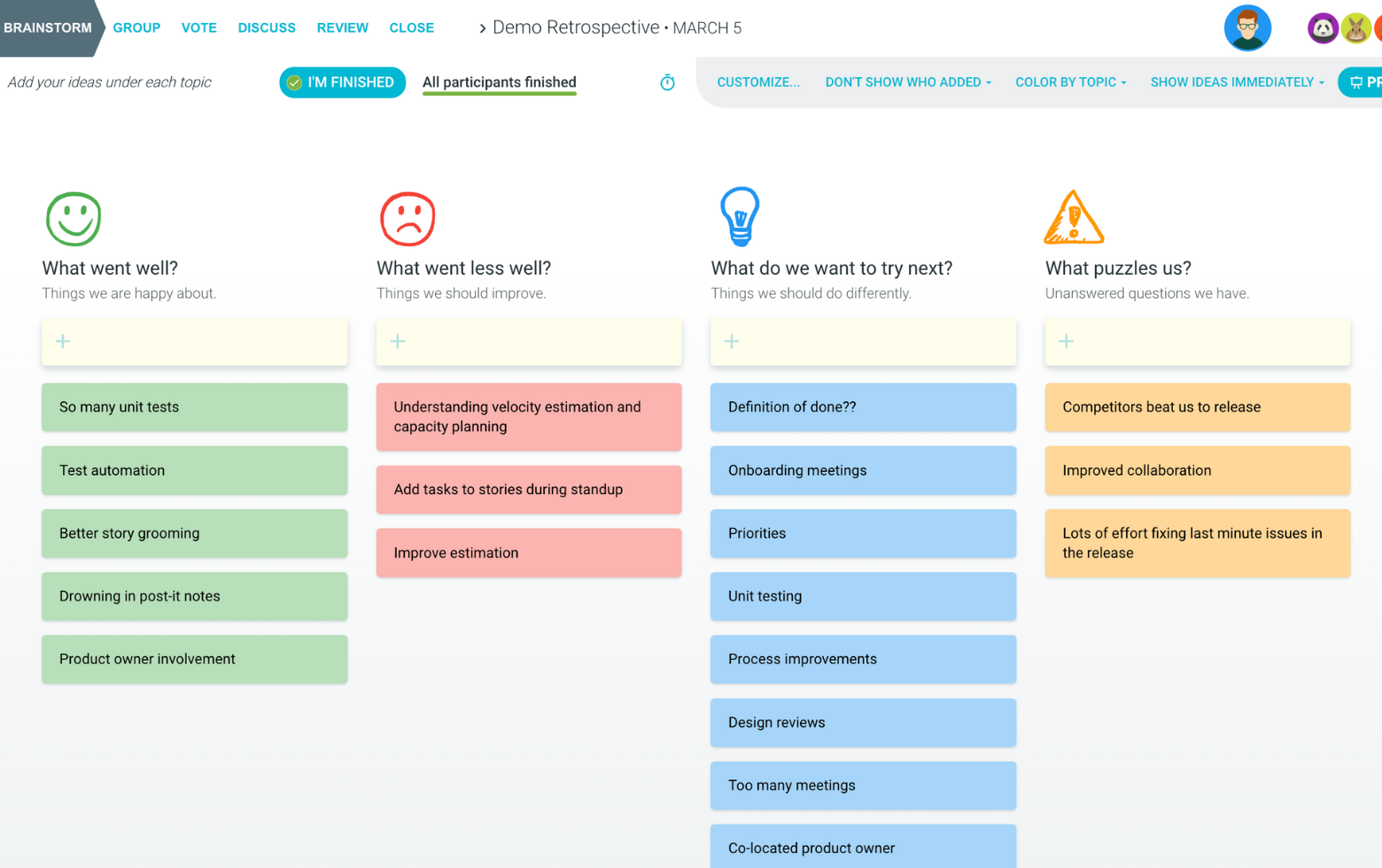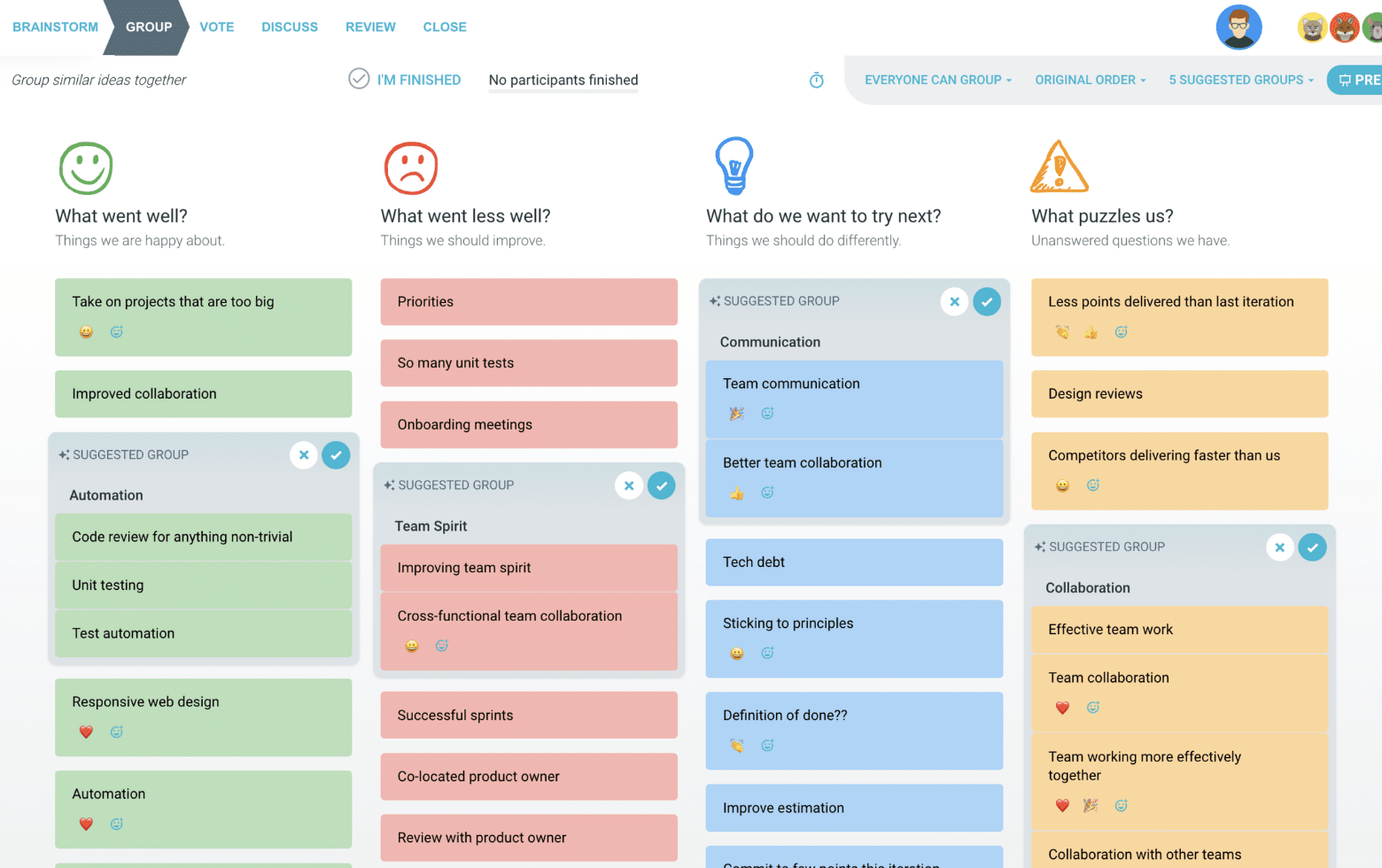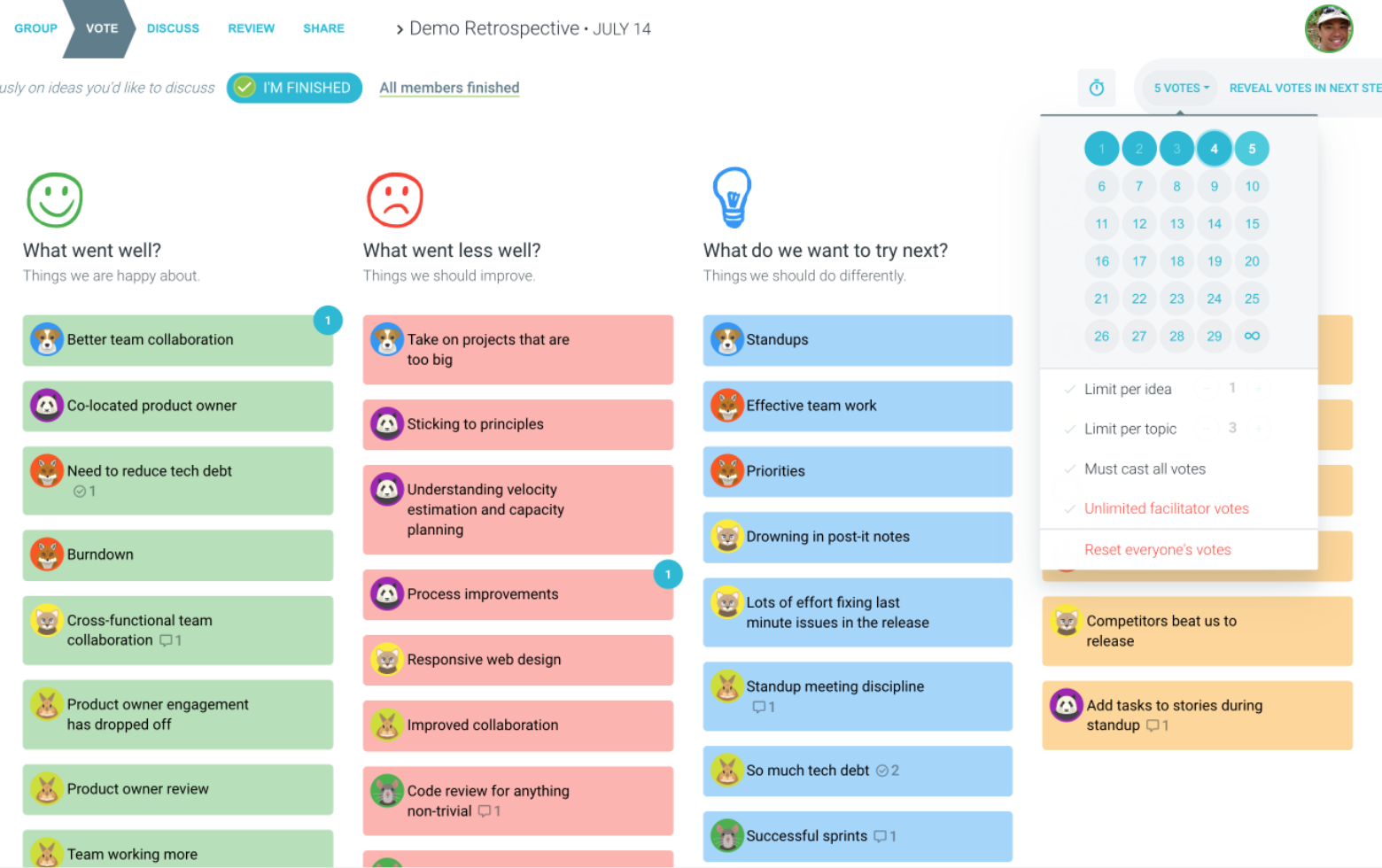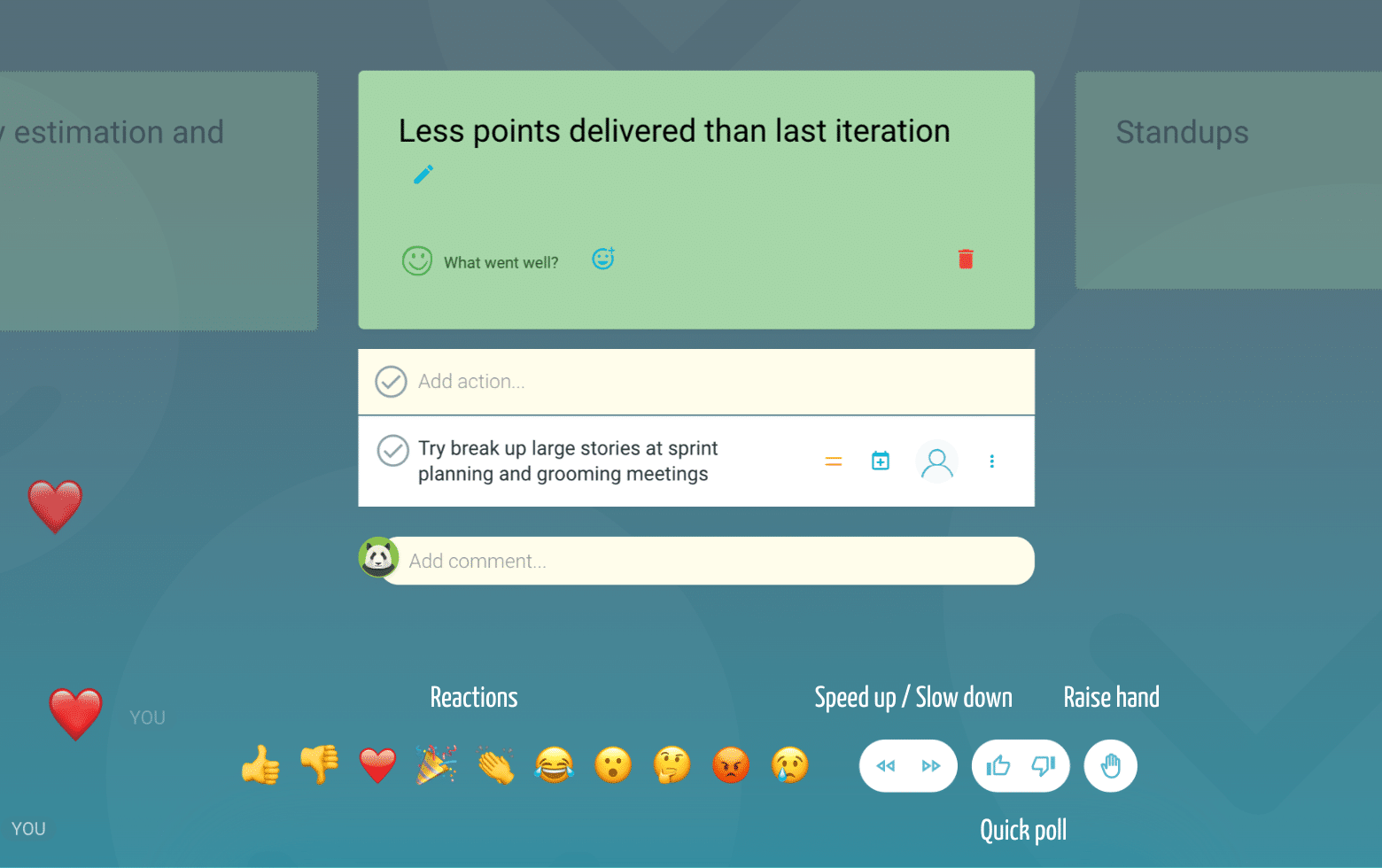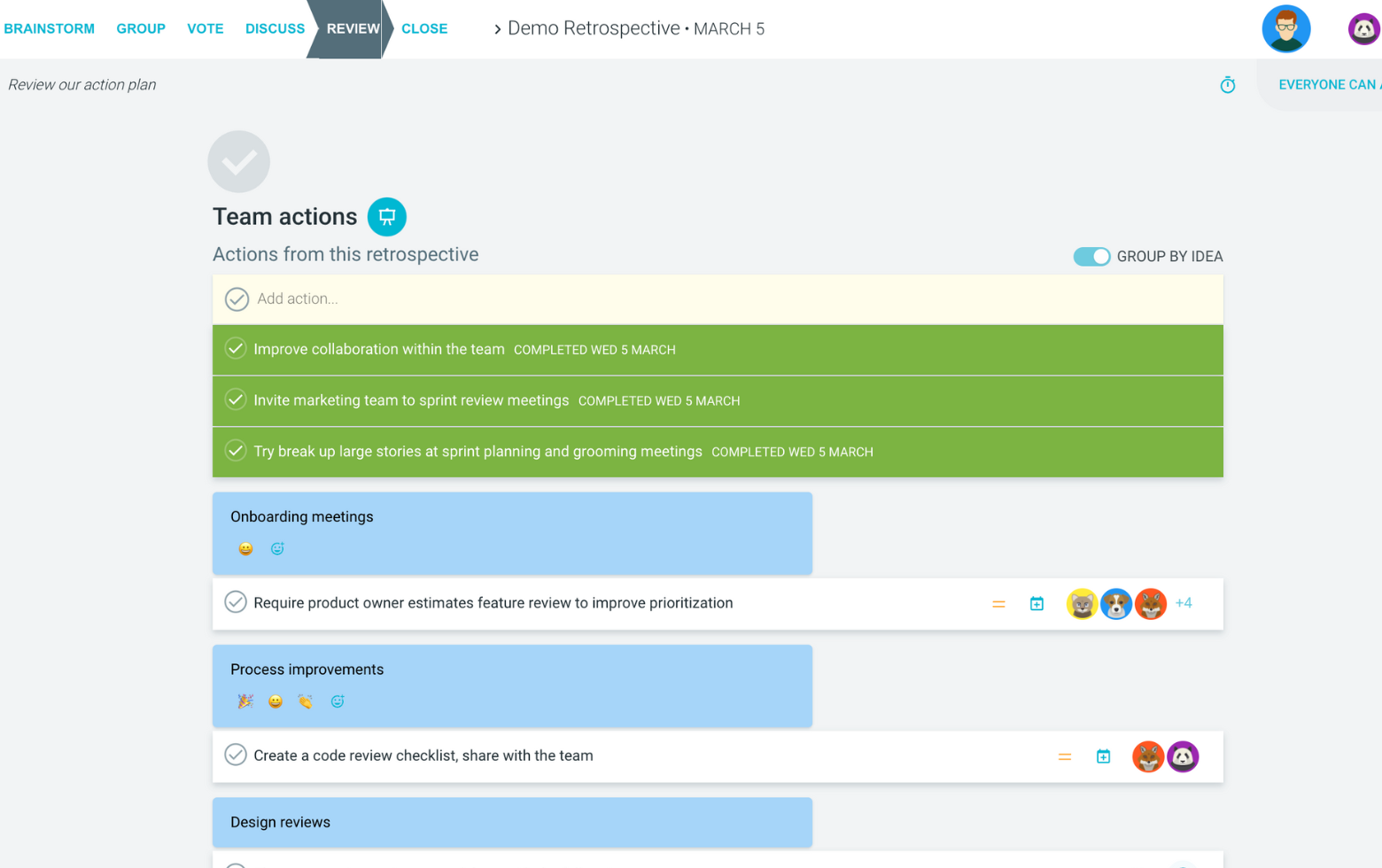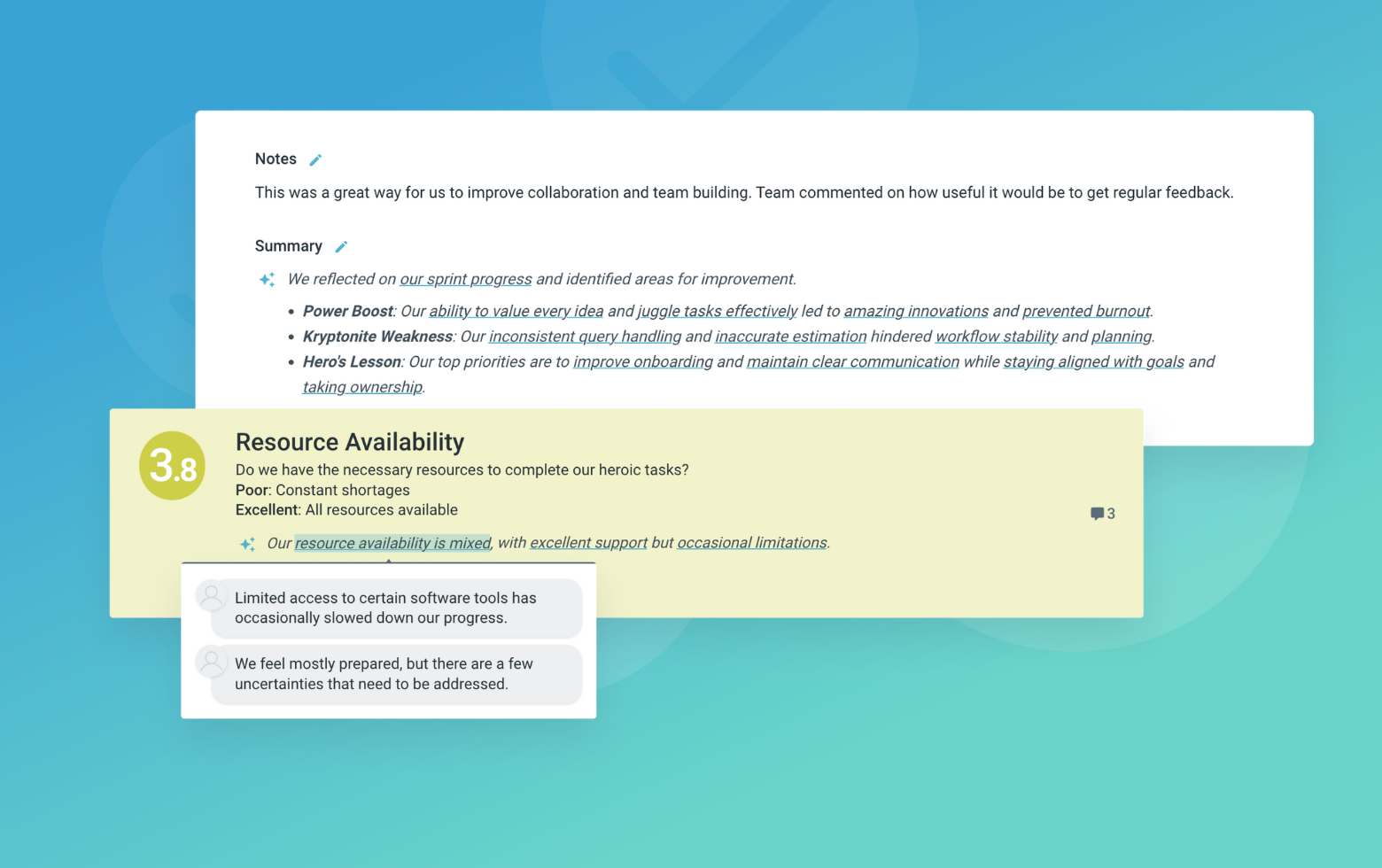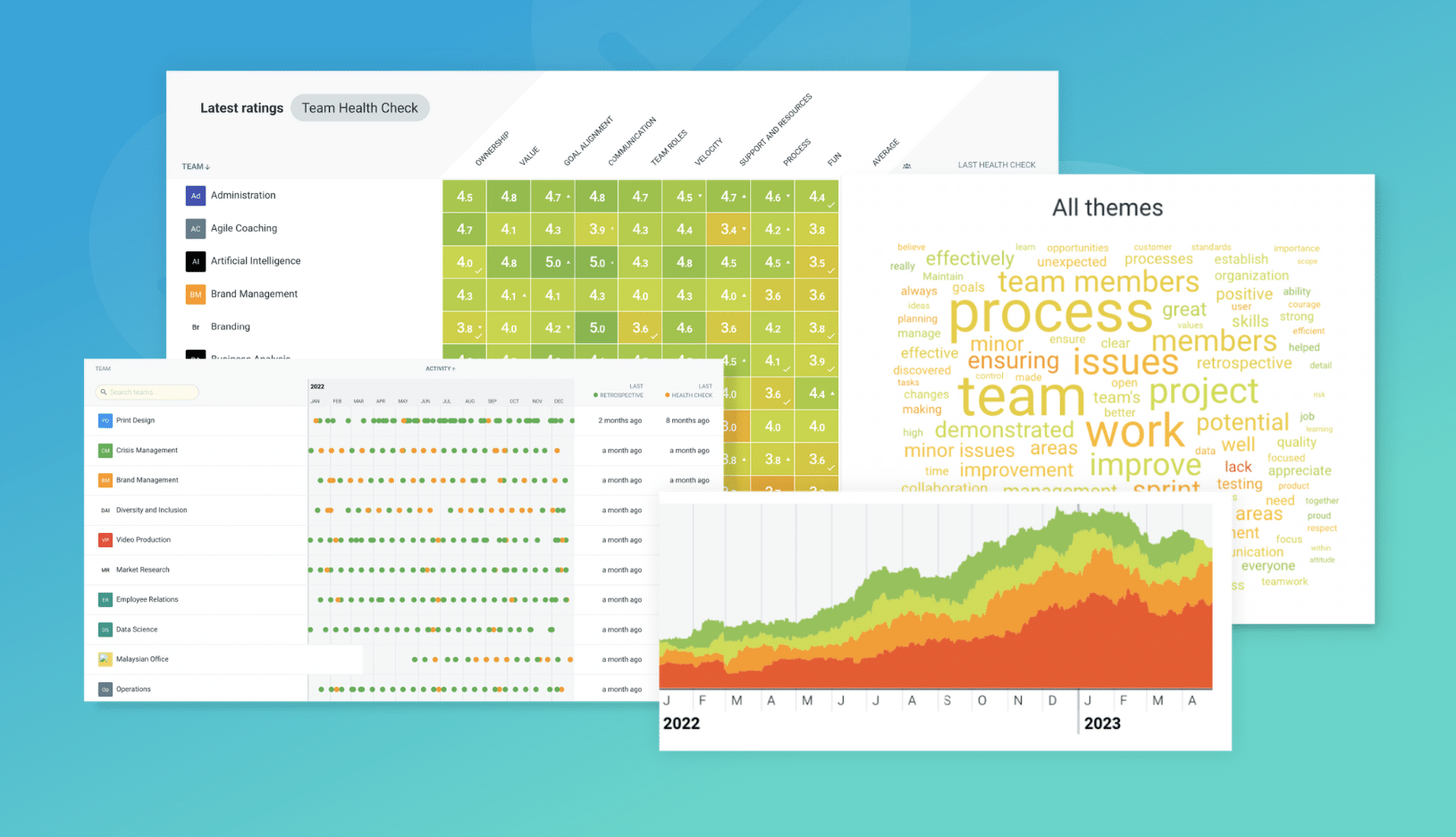What is the Snakes and Ladders retrospective?
Loved the game of snakes and ladders? This fun and easy retrospective format builds on the popular game that gets the team to consider what happens at the finish line, what is needed, what will take the team to the next level and what might cause them to slide back.
Snake and Ladders retrospective format
The snakes and ladders game is straight forward as a concept but can add an element of play, hypothesis and future risk planning when it comes to the execution of the project or epic. The key difference is that you might want to start with the finish first, rather than the start.
Finish
These are the goals and expectations at the end of the cycle. This could be the definition of done or the sprint goals that the team agrees on. Understanding what is waiting for the team at the end of the finish line can help focus team energy and provide direction as to where everyone is heading.
Start
These are all the things needed to get started. Setting up the database or staging environment, or having the right team structure though to resource tools and remote team collaboration tools for running retrospectives. This helps get the team off on the right foot.
Snakes
These are the pitfalls that will drag the team down or bite them in the proverbial. Ask the team to list all the things that they should watch out for and any risks that could arise. Then it’s time to cage or avoid the snakes to reduce the possibilities of failure as they slide back down.
Ladders
These are the things that will take the team to the next level. They could be people, training, resources or tools that help them speed up velocity to reach the sprint goals.
The snakes and Ladders template can also be used to run futurespectives with your team.
Often many of the elements that come out of this retrospective can be added into team agreements and form part of the social contract for the team. Using TeamRetro’s agreement feature lets you capture these and take them forward into your future sprint retrospectives.
Suggested icebreaker questions for Snakes and Ladders retrospective
- What was your favourite board game when you were a kid?
- What ladder have you recently benefited from?
- What snakes have you learned to avoid?
Retro Rehearsal
Invite your team to rehearse the retro referencing a game show.
For example, check out this snippet of a game show.
- What should the contestants start?
- What are the pitfalls?
- What could help?
- What can they expect at the end?
Icebreaker Activity
Need a quick ice breaker or a brain fix? This multiplayer snakes and ladders game lets your remote team play a quick virtual game board and sets the tone to make your retrospective super fun and engaging.
Ideas and tips for your Snakes and Ladders retrospectives
- When it’s time to start your retrospective, give a high-level overview and explain why the first column to start with is actually the finish column.
- If you are not using this retro at the start, then you can change the question to what helped get your team to the finish line.
- The Snakes and Ladders template can also be used at the start of a project in the form of a futurespective to help your team to shape a high-level strategy that supports the smooth delivery of their goal.
- Not every ladder and snake are the same length. A good provocative question might be to ask what is one snake that will send us all the way back to the start and what is one ladder that will accelerate us all the way to the top.
- Rotate the role of facilitator. Changing the role can break the routine.
- Follow up with an action list that you will check off at the start of the next team retro.
How to run a Snakes and Ladders retrospective in TeamRetro
Start Your Session in a Click
Log into TeamRetro and choose your template. Customise questions and the workflow to create your perfect retro for your team.
Create Your Team Easily – No Separate Accounts Needed
Brainstorm Individually – Free From Bias
Smart Grouping for Faster Insights
Fair, Flexible, and Fast Voting
Engage, React, and Capture Key Insights
Walk your team through ideas one by one with Presentation Mode. Stay in sync, spark real-time discussions, and capture feedback with comments, live reactions, and polls—all in one place.
Turn Ideas Into Action
Propose next steps with team buy-in, get AI-powered action suggestions, and keep everything in one place. Committed actions sync to your personal dashboard and integrate with your workflow tools—keeping you on track.
Save, Share, and Stay on Track
Get quick AI-powered summaries, add facilitator notes, and store retrospectives in your library for easy access. Schedule your next session and track published actions to keep your team accountable at the next retro.
Turn Team Data into Actionable Insights
Uncover trends, common themes, and key engagement metrics at a glance. Track sentiment shifts, analyze conversations, and monitor completed actions to drive continuous improvement.


